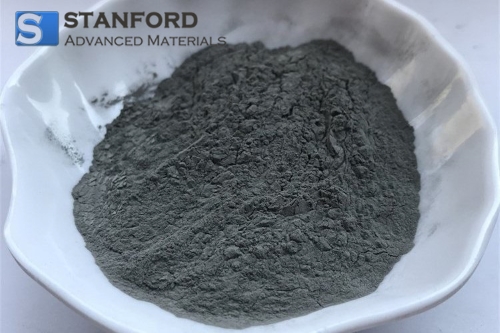Tungsten Carbide Cobalt: An Overview
Introduction
Tungsten carbide cobalt, often referred to as cemented carbide or simply carbide, is a composite material widely recognized for its hardness, wear resistance, and durability. This material is a blend of tungsten carbide (WC), a compound known for its extreme hardness, and cobalt (Co), which acts as a binder to hold the tungsten carbide particles together. The combination of these elements results in a material that is exceptionally strong and versatile, making it invaluable in various industrial applications.

Composition and Properties
Tungsten carbide cobalt is typically composed of 70-97% tungsten carbide with the remainder being cobalt. The specific ratio of tungsten carbide to cobalt can vary depending on the desired properties of the material. Higher WC content generally increases hardness and wear resistance, while higher cobalt content improves toughness and shock resistance.
Key properties of tungsten carbide cobalt include:
- Hardness: Tungsten carbide cobalt is one of the hardest materials available, second only to diamonds. This makes it ideal for cutting, drilling, and machining operations where maintaining a sharp edge is crucial.
- Wear Resistance: The material’s wear resistance and abrasion resistance is a result of its hardness and dense structure, making it suitable for high-stress environments.
- Toughness: While extremely hard, tungsten carbide cobalt also possesses a level of toughness due to the cobalt binder. This prevents the material from being overly brittle and helps it withstand impacts.
- Heat Resistance: The material can withstand high temperatures without losing its hardness, making it suitable for applications involving extreme heat.
Manufacturing Process
The production of tungsten carbide cobalt involves several steps:

- Powder Preparation: WC powder is mixed with cobalt powder in precise ratios. Additional additives may be included to enhance specific properties.
- Mixing: The powders are thoroughly mixed to ensure even distribution of the cobalt binder throughout the tungsten carbide particles.
- Compaction: The mixed powders are pressed into a desired shape using high pressure. This process is often performed in a mold to achieve the final product shape.
- Sintering: The compacted material is heated to a temperature just below the melting point of cobalt. During sintering, the cobalt melts and binds the WC particles together, forming a dense and solid material.
- Finishing: After sintering, the material may undergo additional finishing processes such as grinding, cutting, or coating to meet specific application requirements.
Applications
Tungsten carbide cobalt is used in a wide range of applications due to its exceptional properties:
- Cutting Tools: The material is widely used in the manufacturing of cutting tools such as drills, milling cutters, and saw blades. Its ability to maintain sharpness and resist wear makes it ideal for machining hard materials like steel and alloys.
- Mining and Construction: Tungsten carbide cobalt is essential in the mining and construction industries for making tools such as drill bits, excavation equipment, and rock-cutting tools. Its hardness and toughness allow it to withstand the harsh conditions encountered in these fields.
- Wear Parts: In industries where equipment is subject to constant wear and abrasion, tungsten carbide cobalt components are used to extend the life of the machinery. Examples include nozzles, valve seats, and bearings.
- Aerospace and Defense: The material’s ability to endure extreme temperatures and pressures makes it suitable for aerospace and defense applications, including the production of aircraft components and armor-piercing ammunition.
Advantages and Challenges
- Exceptional Hardness and Wear Resistance: Tungsten carbide cobalt’s primary advantage is its unparalleled hardness, making it ideal for high-wear applications.
- Versatility: The material can be tailored to specific applications by adjusting the tungsten carbide to cobalt ratio.
- Longevity: Components made from tungsten carbide cobalt typically have a longer service life compared to those made from other materials.
While the advantages of tungsten carbide cobalt make it an attractive choice, there are also challenges that must be considered when using this material.
- Brittleness: Despite its toughness, tungsten carbide cobalt can still be brittle, especially in thin or highly stressed sections.
- Cost: The production of tungsten carbide cobalt is relatively expensive, which can be a limiting factor for some applications.
- Health and Environmental Concerns: The manufacturing process involves the use of cobalt, which poses health risks if not handled properly. Additionally, the mining of tungsten and cobalt has environmental implications.
Conclusion
Tungsten carbide cobalt is a remarkable material that plays a critical role in various industries due to its combination of hardness, wear resistance, and toughness. Its applications are diverse, ranging from cutting tools and mining equipment to aerospace components. While the material presents some challenges, particularly in terms of cost and brittleness, its advantages make it indispensable in situations where extreme durability is required. As technology advances, tungsten carbide cobalt will likely continue to be a key material in the development of high-performance tools and components.
Stanford Advanced Materials (SAM) brings extensive experience in the manufacturing and supply of high-quality Tungsten Carbide Cobalt Powder (WC-8Co). We offer not only Tungsten carbide cobalt but also a range of other advanced materials. We also provide customized solutions tailored to help extend the service life of your equipment, ensuring reliable performance in demanding applications. For more information, please check our homepage.


